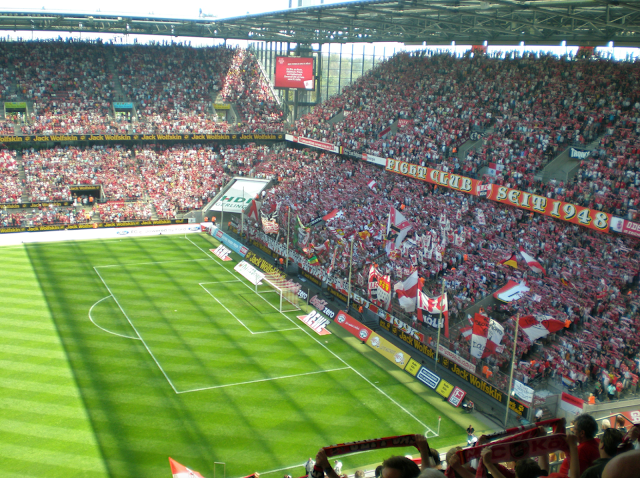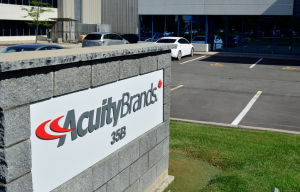Archive for June 2017
LED makes grass on Bundesliga football pitches ‘healthier’

The Greenkeeper LED system in action at the FC Köln ground. Coloured LEDs are used to help spur grass growth.
FC Köln, which holds a prized place in the German Bundesliga, is using a mobile LED light structure that can move around the team’s training and match pitches beaming LED light onto the field.
The club hopes that the LEDs will speed up the turf’s recovery after taking a bruising during a match.
The areas in front of the goals see a disproportionate amount of traffic during a match and therefore need more treatment from the LED lighting.
The team has found that the system leads to grass filling in gaps damaged by play much more quickly than with the older system. Meanwhile, the LED sources are delivering energy savings at the same time.
Hennef, Germany-based Rhenac GreenTec AG developed the LED lighting system, named Greenkeeper, which uses Tina2 optics from Finland-based LEDiL Oy to deliver the required beam pattern.
The frame uses mainly red LEDs with a smaller number of blue LEDs to cover the well-documented chlorophyll absorption peaks of plants. Furthermore, the system includes an integrated infrared heating system to approximate ideal grass-growing conditions, as reported in LEDs Magazine.
FC Köln has found that the LED system delivers six times more light to the playing surface relative to the older HID system. And the mobility enables the pitch crew to move the system into areas that require extra attention.
Evidence gathered from numerous trials, taking place around the world, seems to prove that plants and crops grown using LED light sources, with spectrums tuned specifically to the individual plant or crop, will not only grow faster, but will generally be healthier and provide greater yields – something that bodes well for the future of the LED lighting industry.
A revolution is happening in horticulture. It’s a seismic shift that will change fundamentally how we grow plants – and it’s all down to lighting. Lux’s Horticulture Lighting Conference
bundesliga · grass growing led · greener grass · horticultural lighting · led horticulture · Novel Energy Lighting
The company is hoping to expand its catalogue of IoT offerings, by bringing luminaires and building management controls together.
IoT sensors implanted in LEDs have the ability to collect analytical information on the behaviour of the people that use a building, offering information on how long people stay in a room, for example, and during what hours of the day.
Acuity has devised software that will offer an array of capabilities, including indoor positioning, asset tracking, space utilisation, spatial analytics and energy management.
The company unveiled its new product, Atrius, at Lightfair in Philadelphia, which, the firm hopes will advance Acuity’s IoT products, making them much more sensory.
‘Lights are installed throughout most of our indoor and outdoor spaces. In addition, lights are powered and connected, and with the emergence of LED lighting, they now feature onboard intelligence.’
The product can help employees find available meeting rooms, empower travelers to navigate busy airports, guide shoppers to a specific product on a store shelf or permit a retailer to receive an alert that a customer needs sales assistance.
‘Lights are installed throughout most of our indoor and outdoor spaces. In addition, lights are powered and connected, and with the emergence of LED lighting, they now feature onboard intelligence,’ commented Greg Carter, vice president and general manager of Atrius.
‘That’s why we believe LED lighting is the best and least expensive infrastructure for delivering a sensory network that feeds IoT platforms to connect systems, spaces and people.’
Atrius IoT applications utilise LED lighting infrastructure rather than requiring additional equipment like stand-alone beacons or dedicated IoT networks, bringing a faster return-on-investment.
As IoT technology improves, upgrades are simple and cost effective. Further, the conversion of conventional lighting to LED lighting can provide the energy savings to help fund evolving IoT capabilities.
acuity brands · connected lighting · indoor positioning · internet of things · iot · Novel Energy Lighting · spatial analytics




